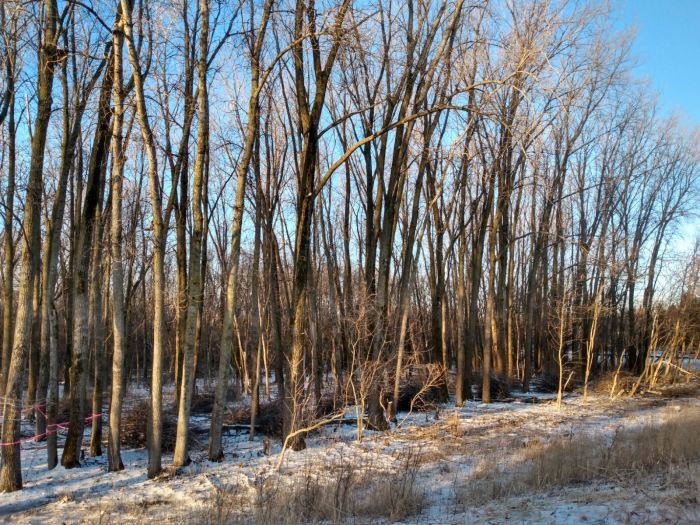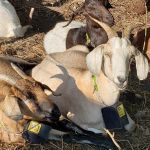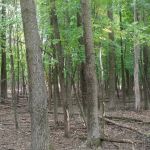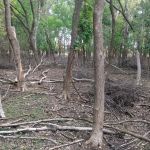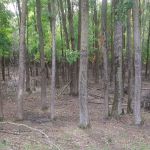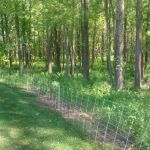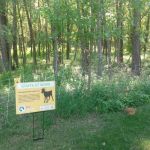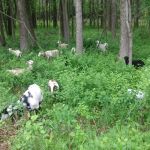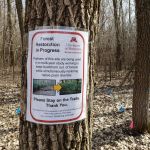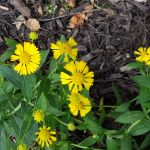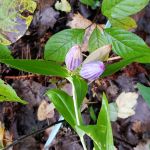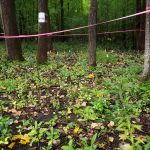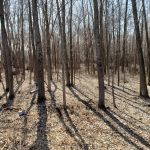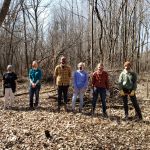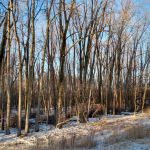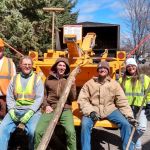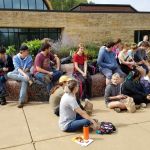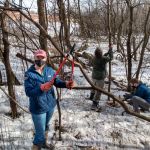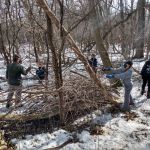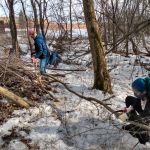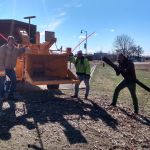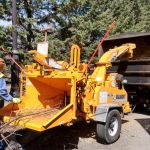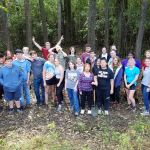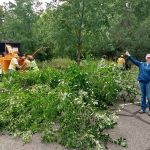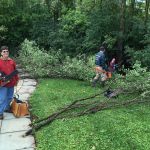VH City Hall Wooded Wetland Restoration
Quick facts:
- The restoration area is a total of 20 acres on 2 adjacent parcels owned by the City of Vadnais Heights.
- Both parcels are seasonally-flooded wetland areas and not allowable for development.
- Rare plant species have been reported at the site but have not been detected since heavy buckthorn cover filled the wetland area.
- As an on-site resource where VLAWMO offices are headquartered, this is an ongoing site for student and volunteer training in restoration procedures and buckthorn control.
- The site was also part of a 3-year citizen science project with the University of Minnesota. The Cover it Up plot was active during 2020-2022 and wrapped up at the end of the growing season in 2022.
Funding:
This invasive species removal and restoration effort received funding from the Minnesota Department of Agriculture for a noxious weed and invasive plant control grant in 2021. The effort has also received support in partnership with the City of Vadnais Heights through Public Works staff time and equipment use. VLAWMO resident volunteers, Academy for Sciences & Agriculture high-school students, and community-engaged learning students from the University of Minnesota have donated considerable time working on this restoration effort that has been underway since 2019. Sentence-to-serve crews have worked to remove and chip large, mature buckthorn trees.
Reasons for the project:
- The area was a wetland that was densely infested with invasive buckthorn; thick buckthorn cover limited healthy ecological function of this wetland.
- Located at the VLAWMO offices and Vadnais Heights City Hall, this location is an optimal demonstration space with opportunities for students and volunteers to learn about the process of invasive species control and habitat restoration.
- Reseeding efforts following buckthorn removal focus on native plants and especially forbs to improve pollinator resources.
- The onsite location also offered an opportunity to contribute to scientific research and restoration process understanding through a citizen science effort called Cover it Up (University of Minnesota).
- As restoration continues and progresses, contribute to a high quality of life for community and the environment as outlined by the City of Vadnais Heights Parks and Recreation.
- The construction process has involved clearing buckthorn using cut stump treatments.
- Large buckthorn trees have been chipped; onsite piling is also being used to allow woody material to break down onsite.
- Buckthorn removal began in 2019.
- As areas are cleared of buckthorn, the priority is to remove remaining mature, fruiting buckthorn and remove re-sprouts. Repeated, intensive grazing strives to reduce the plant's nutrient stores to the point it's unable to regenerate.
- Seeding with native plant species is conducted in areas where buckthorn has been removed.
- Monitoring includes regular checks during the growing season for plant species of concern that may be able to come back with buckthorn removed.
- Goat grazing was utilized in 2023 and 2024 to control re-sprouting buckthorn. Repeated, intensive grazing strives to reduce the plant's nutrient stores down to the roots so that it's unable to regenerate. More info on goat grazing for buckthorn control can be found here.
Native plants added in seed mixes include:
Anise Hyssop, Rose Milkweed, Swamp Marigold, Partridge Pea, Lance-leaf Coreopsis, Prairie Cinquefoil, Purple Coneflower, Sneezeweed, Early Sunflower, Dense Blazing Star, Great Blue Lobelia, Wild Bergamot, Stiff Goldenrod, Foxglove Beardtongue, Mountain Mint, Yellow Coneflower, Black-eyed Susan, Brown-eyed Susan, Smooth Blue Aster, Blue Vervain, and Golden Alexander
Results:
The wooded wetland provides a highly visible demonstration space at Vadnais Heights City Hall. This restoration process features ongoing invasive species removal and restoration efforts in a public space. People in the community can enjoy the wooded wetland and gain inspiration and experience in working to remove invasive species that they can apply in their own yards and residential areas. The restoration work has also allowed students to learn more about and contribute to the effort.

